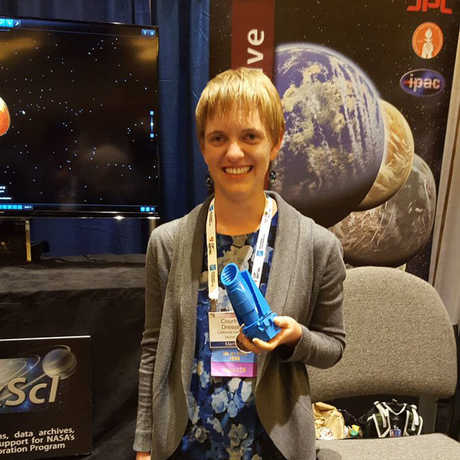Reservations: Members: $12, General $15, Seniors $12. Seating is limited and advanced ticketing is required. To reserve a place today, buy a member or non-member ticket online or over the phone at 1-877-227-1831.
Benjamin Dean Astronomy Lectures
Meet the Neighbors: Searching for Nearby Planets with the Transiting Exoplanet Survey Satellite

Artist conception of the KOI-961 planetary system, consisting of the three smallest planets known outside our own solar system.
Courtney Dressing, University of California at Berkeley
The NASA Kepler mission revealed that our Galaxy is teeming with planetary systems and that Earth-sized planets are common, but most of the planets detected by Kepler orbit stars that are too faint to permit detailed study. Excitingly, the NASA Transiting Exoplanet Survey Satellite (TESS) is scheduled to launch this spring and find hundreds of small planets orbiting stars that are much closer and brighter. Unlike the Kepler planets, the TESS planets will be ideal targets for follow-up observations to determine their masses, compositions, and atmospheric properties. Dr. Dressing will describe the TESS mission and explain how in-depth analyses of the TESS planets will allow us to probe the compositional diversity of small planets, investigate the formation of planetary systems, and set the stage for the next phase of exoplanet exploration: the quest for biosignatures in the atmospheres of strange new worlds.

About the Speaker
Courtney Dressing - shown here with a model of the Kepler Space Telescope - received her Ph.D. in Astronomy and Astrophysics from Harvard University in 2015. Following postdoctoral research at Harvard, she was appointed a NASA Sagan Fellow at the Division of Geological and Planetary Sciences at Cal Tech, then joined the Department of Astronomy at UC Berkeley in 2017.
Her observational experience includes time at Lick Observatory on Mt. Hamilton, at the legendary 200-inch Hale Telescope on Palomar Mountain, and at various instruments on Mauna Kea, including the giant, 10-meter Keck Telescope. With these and other instruments, she searches for alien worlds circling distant stars, curious about how planets form and evolve with time, the frequency of planetary systems in the Galaxy, and the prospects for detecting life on planets outside of our Solar System.